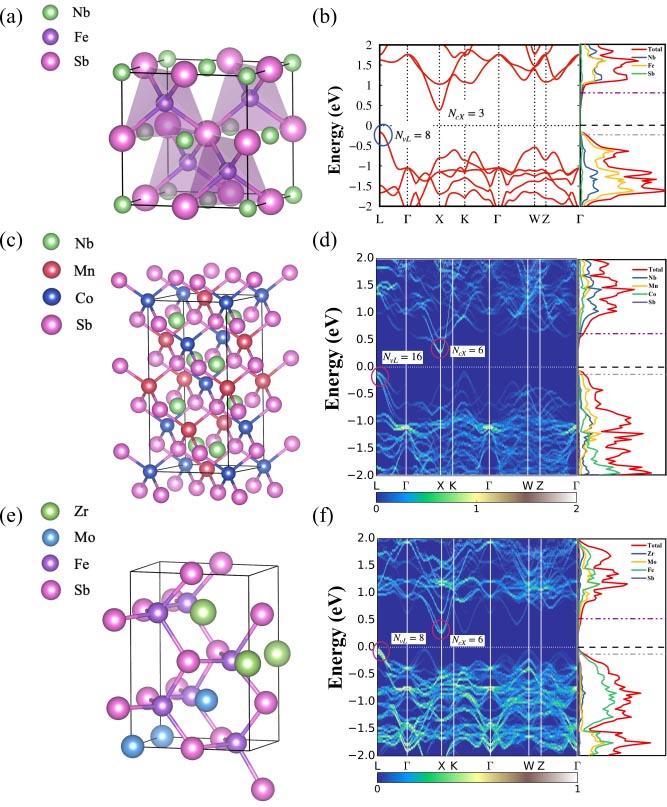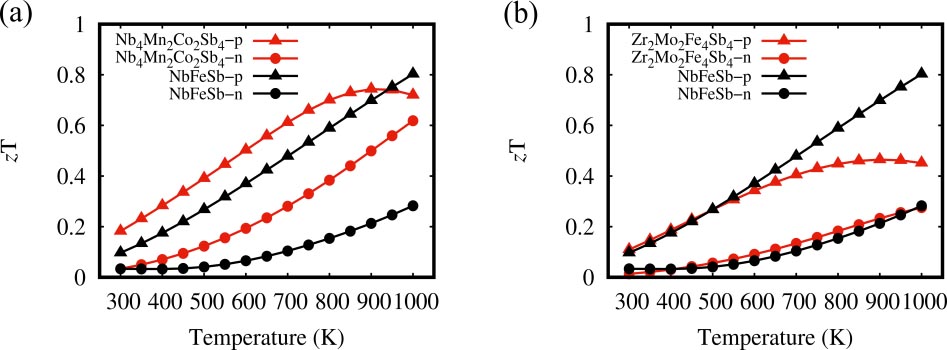
In a new band convergence scheme proposed recently by Professor ZHANG Yongsheng’s group from the Institute of Solid State Physics, Hefei Institutes of Physical Science (HFIPS), Chinese Academy of Sciences (CAS), the thermoelectric performance of half-Heusler (HH) materials was improved successfully, which provided an effective way to explore novel thermoelectric materials.
The relevant results were published in Journal of Materials Chemistry A.
Half-Heusler materials with 18 electrons are potential candidates for thermoelectric materials. NbFeSb from the family is a typical positive-type high-performance thermoelectric material. The methodology to improve the thermoelectric performance of the NbFeSb-based compound focuses on decreasing the thermal conductivity. However, since the valence band is dominated by the d-orbital of transitional metals in NbFeSb, it is not easy to enhance the thermoelectric properties of the compound via the band engineering, such as the band convergence.
"We have been looking for a promising 18-e NbFeSb-based HH thermoelectric materials," said Prof. ZHANG, "and the left and right elements in the periodic table hit upon me." They replaced the Mn and Co for Fe, and Zr and Mo for Nb. During the mixing, 18-e mixtures Nb4Mn2Co2Sb4 and Zr2Mo2Fe4Sb4, two semiconductors, were obtained by electron transfer from 19-e systems fill the holes in 17-e systems when the mixing ratio is 1:1.
Then scientists predicted two new thermodynamically stable 18-e HH compounds through density-functional theory combined with cluster expansion method. The Nb4Mn2Co2Sb4, one of the mixtures had boosted the electrical properties thanks to the high band degeneracy of it. Aside from that, the mixtures have a lower thermal conductivity than NbFeSb as the complex geometries and low-lying acoustic phonon branches.
In this scheme, the positive- and negtive-type zT values of Nb4Mn2Co2Sb4 are predicted to reach to 0.72 and 0.62 at 1000K, higher than those in the pristine NbFeSb compound.
"Our work shows that combining 17-e and 19-e compounds to form 18-e compounds is an effective way to find novel HH materials with high thermoelectric performance", said TI Zhuoyang, first author of the paper.

Fig 1. Crystal structures (a: NbFeSb, c: Nb4Mn2Co2Sb4, e: Zr2Mo2Fe4Sb4), their corresponding band structures and density of states (b, d, f). (Image by TI Zhuoyang)

Fig 2. zT values of Nb4Mn2Co2Sb4 (the red lines in a), Zr2Mo2Fe4Sb4 (the red lines in b) and NbFeSb (the black lines). The triangle and circle lines represent the p- and n-type thermoelectric properties, respectively. (Image by TI Zhuoyang)